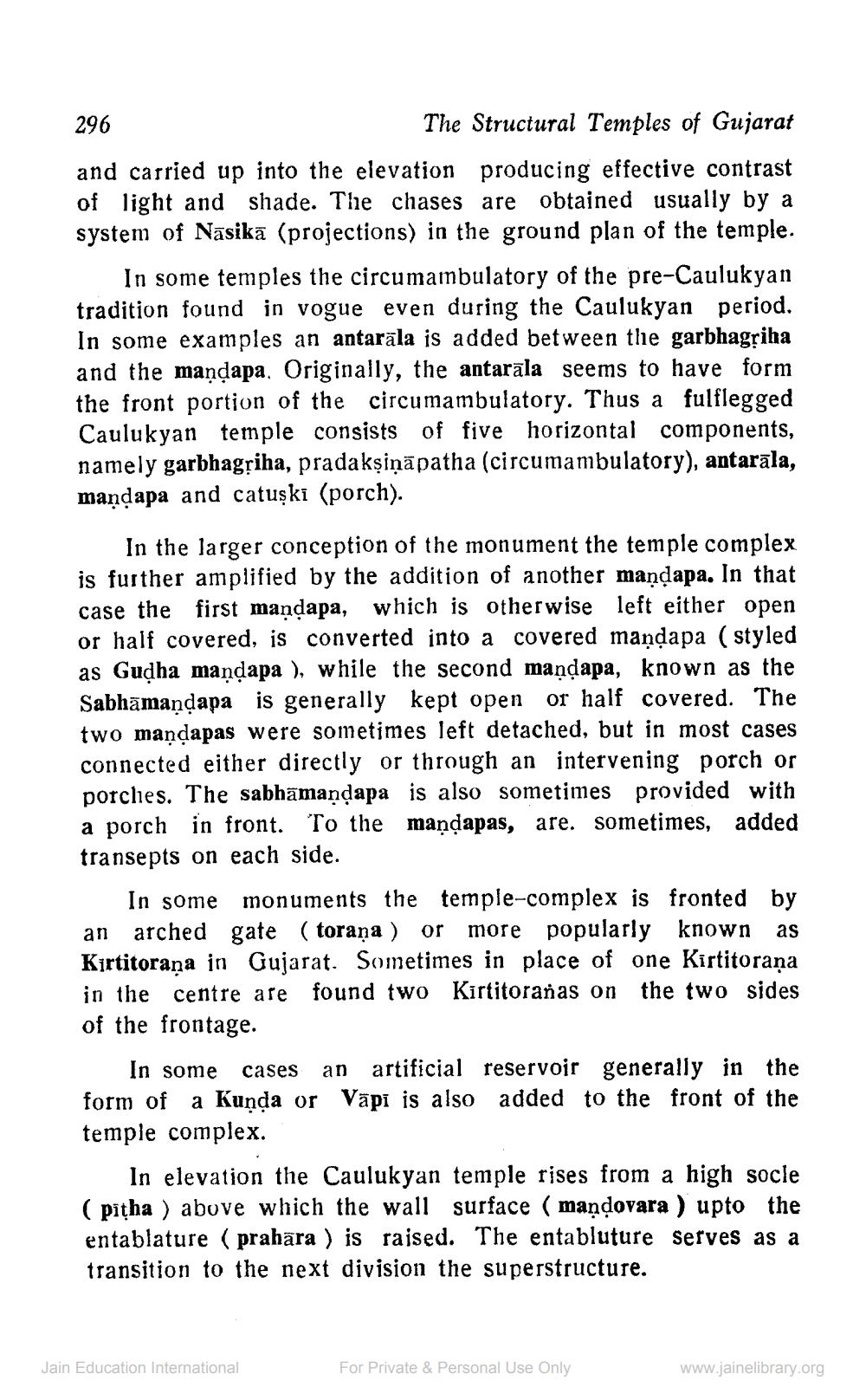________________
296
The Structural Temples of Gujarat and carried up into the elevation producing effective contrast of light and shade. The chases are obtained usually by a system of Nāsikā (projections) in the ground plan of the temple.
In some temples the circumambulatory of the pre-Caulukyan tradition found in vogue even during the Caulukyan period. In some examples an antarāla is added between the garbhagļiha and the mandapa. Originally, the antarala seems to have form the front portion of the circumambulatory. Thus a fulflegged Caulukyan temple consists of five horizontal components, namely garbhagļiha, pradakşiņāpatha (circumambulatory), antarala, maņdapa and catuṣki (porch).
In the larger conception of the monument the temple complex is further amplified by the addition of another mandapa. In that case the first maņdapa, which is otherwise left either open or half covered, is converted into a covered maņdapa ( styled as Guļha maņdapa ), while the second maņņapa, known as the Sabhāmaņdapa is generally kept open or half covered. The two mandapas were sometimes left detached, but in most cases connected either directly or through an intervening porch or porches. The sabhāmandapa is also sometimes provided with a porch in front. To the maņďapas, are. sometimes, added transepts 1 each side.
CACIULIECIE
In some monuments the temple-complex is fronted by an arched gate ( toraņa ) or more popularly known as Kirtitoraņa in Gujarat. Sometimes in place of one Kirtitoraņa in the centre are found two Kirtitorañas on the two sides of the frontage.
In some cases an artificial reservoir generally in the form of a Kunda or Vāpī is also added to the front of the temple complex.
In elevation the Caulukyan temple rises from a high socle (pītha ) above which the wall surface ( mandovara ) upto the entablature (prahāra ) is raised. The entabluture serves as a transition to the next division the superstructure.
Jain Education International
For Private & Personal Use Only
www.jainelibrary.org




